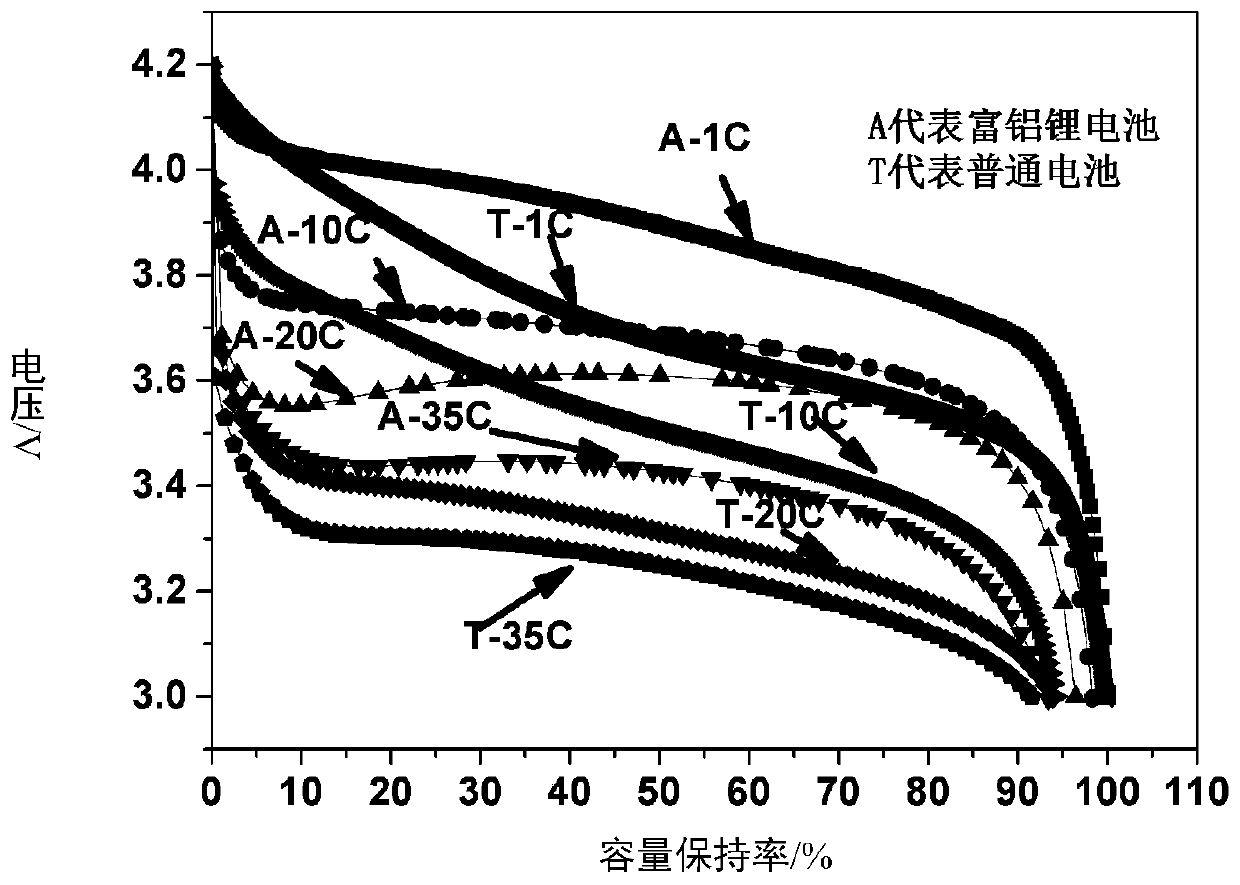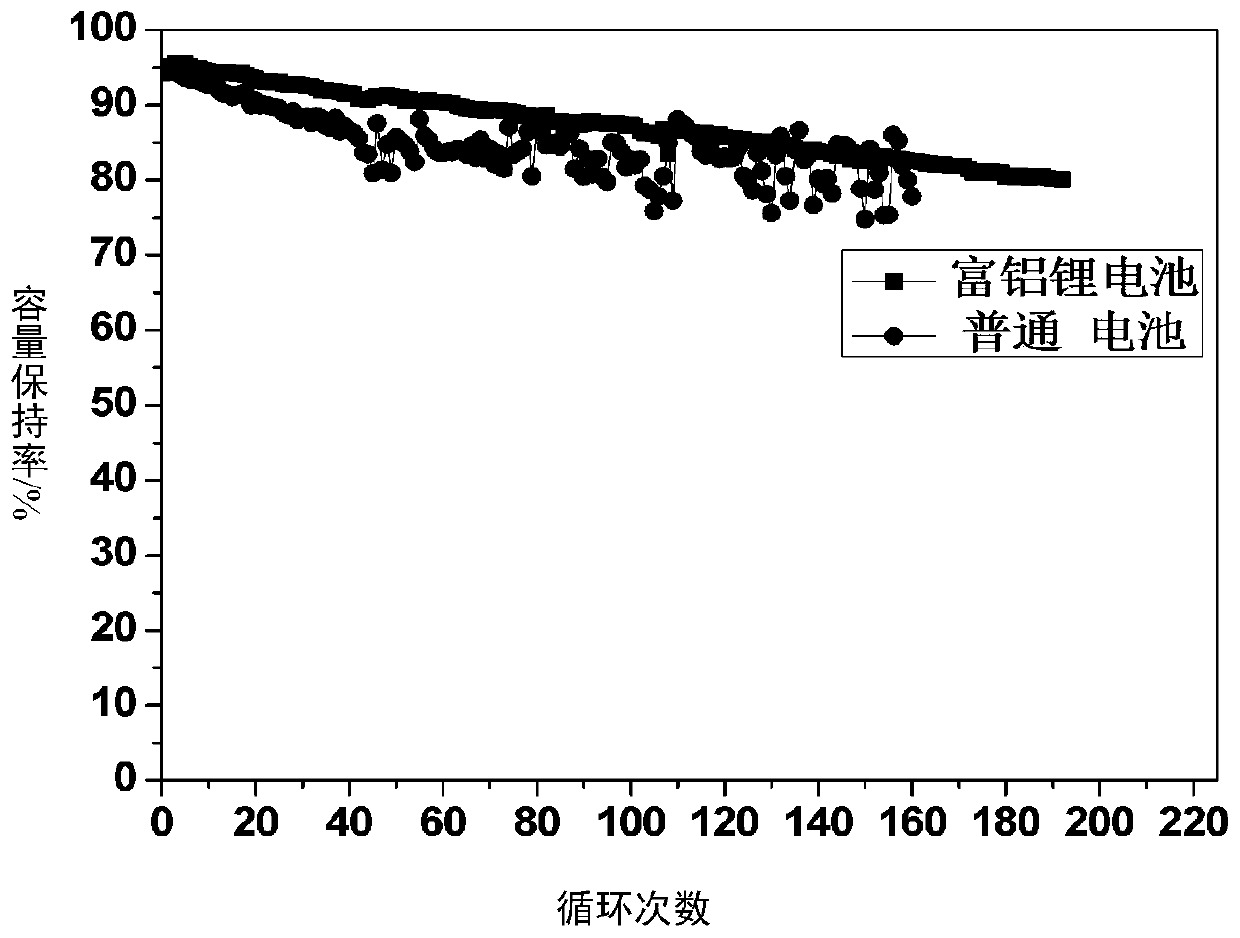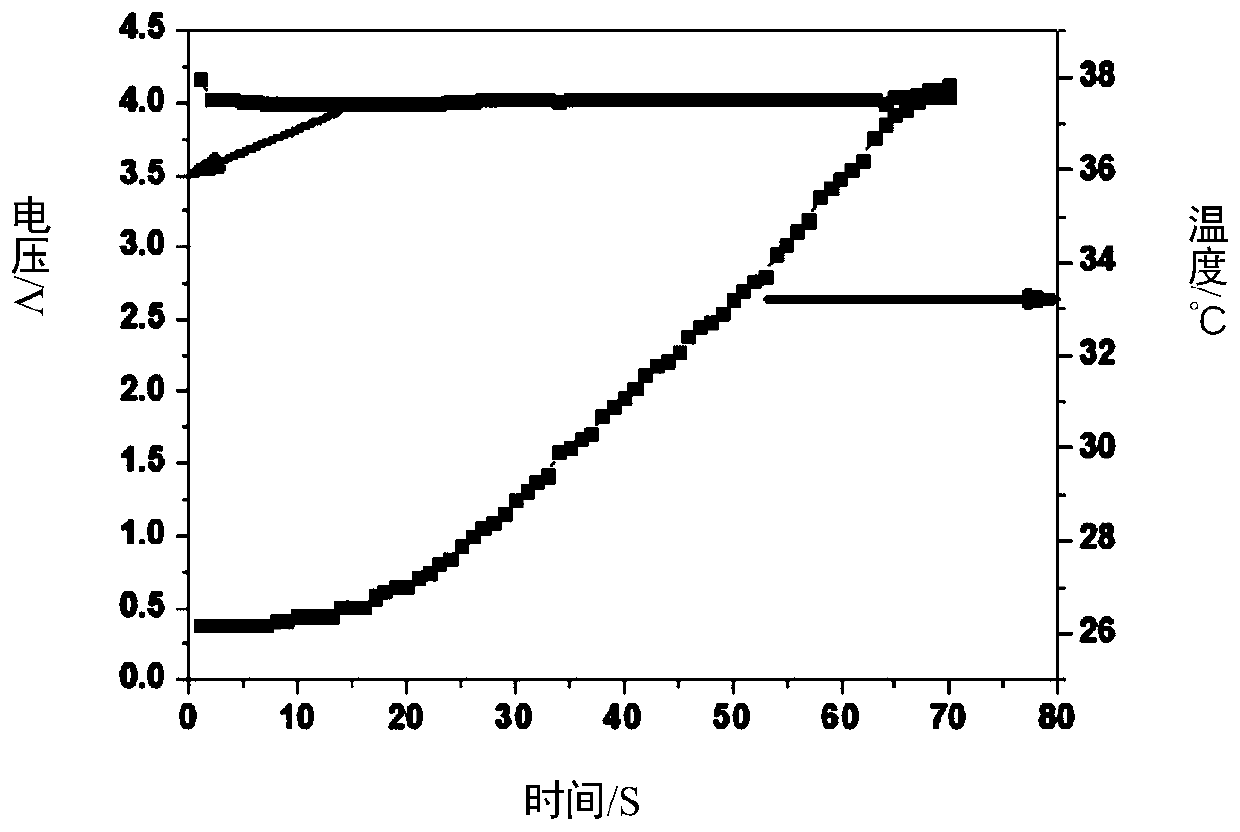Lithium ion battery and preparation method thereof
A lithium-ion battery and electrolyte technology, which is applied in the manufacture of electrolyte batteries, electrodes, secondary batteries, etc., can solve the problems of unfavorable industrial application, complicated preparation process, and many raw materials, and achieve low cost, simple steps, and improved conductivity. rate effect
- Summary
- Abstract
- Description
- Claims
- Application Information
AI Technical Summary
Problems solved by technology
Method used
Image
Examples
preparation example Construction
[0039] The invention discloses a preparation method of a lithium ion battery, comprising the following steps:
[0040] By putting the primary clay or bauxite into the pipeline iron remover, the magnetic substances in the primary clay or bauxite are removed to obtain secondary clay or secondary bauxite;
[0041] The secondary clay or secondary bauxite and the positive electrode material are mixed and ground in a mass ratio of 0.5-10:90-100 to obtain a mixture; the positive electrode material is selected from lithium manganate, lithium iron phosphate, lithium-rich manganese-based positive electrode materials, cobalt One or more of Lithium Oxide positive electrode material, nickel-cobalt-manganese and nickel-cobalt-aluminum ternary positive electrode material;
[0042] The mixture is sintered at 600-1000°C to obtain the positive electrode composite material, the heating rate of sintering is 5-10°C / min, the temperature range of heat preservation is 600-1000°C, and the sintering ti...
Embodiment 1
[0051] The preparation method of the lithium ion battery that this specific embodiment provides, comprises the steps:
[0052] Magnetic separation treatment of raw clay: put the raw clay in the pipeline iron remover to remove Fe, Fe 2 o 3 , NiO and other magnetic substances, the treatment time is 0.5h, and the secondary clay is obtained. Lithium manganese oxide was selected as the positive electrode material. 1.6g of secondary clay and 45g of lithium manganate were mixed and ball milled in a SPEX 8000 ball mill for 12 hours to obtain a mixture. The mass ratio of secondary clay to lithium manganate was 3.5:100. The mixture was placed in a tube furnace for air sintering for 8 h. The temperature control of the sintering includes a heating process and a constant temperature process, the heating rate of the heating process is 5°C / min, and the temperature control of the constant temperature process is 800°C. After the sintering is completed, the positive electrode composite mater...
Embodiment 2
[0063] The difference between Example 2 and Example 1 is that the mass ratio of secondary clay to lithium manganate is 0.5:100.
PUM
| Property | Measurement | Unit |
|---|---|---|
| Viscosity | aaaaa | aaaaa |
| Viscosity | aaaaa | aaaaa |
Abstract
Description
Claims
Application Information
 Login to View More
Login to View More - R&D
- Intellectual Property
- Life Sciences
- Materials
- Tech Scout
- Unparalleled Data Quality
- Higher Quality Content
- 60% Fewer Hallucinations
Browse by: Latest US Patents, China's latest patents, Technical Efficacy Thesaurus, Application Domain, Technology Topic, Popular Technical Reports.
© 2025 PatSnap. All rights reserved.Legal|Privacy policy|Modern Slavery Act Transparency Statement|Sitemap|About US| Contact US: help@patsnap.com



